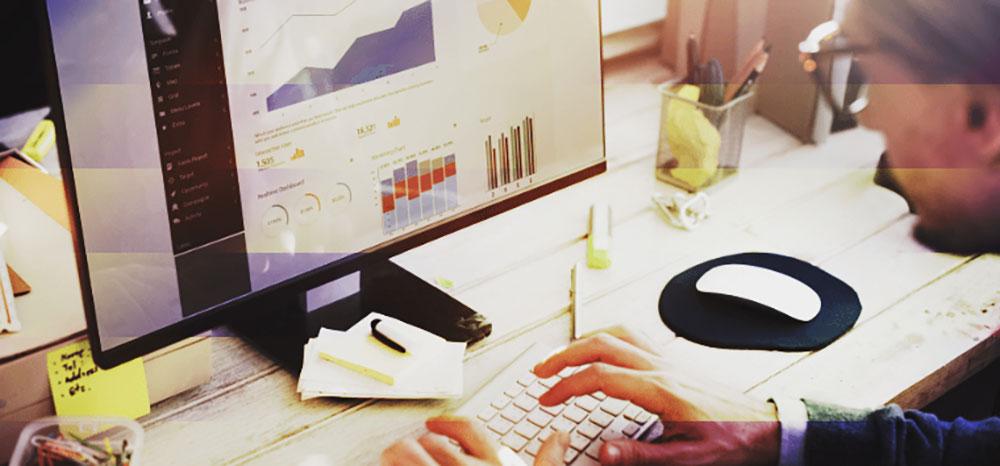How COVID-19 Could Change Your Business for The Better
You can hardly turn on your laptop these days without seeing another article, editorial or social post containing the phrase “new normal.” Most of these focus on questions like “When the COVID-19 pandemic is under control and we can all stop home-schooling, start traveling more than 5 minutes away and begin rebuilding our lives, what might the ‘new normal’ look like?

Those of us at Modern Impact don’t possess a crystal ball, but it might help to remember that, as marketers, we’re always dealing with a “new normal.” Consumer behaviors and the business practices necessary to address them are perpetually evolving. It’s the natural state of commerce in the Free Enterprise system and what makes today’s digital marketing technology so valuable. Measuring and managing consumer interactions in real-time is critical to your success, so every smart marketer is already taking steps to identify key trends and prospect attitudes. The big difference right now is that these all of these market shifts are happening simultaneously – and at the macro level.
So, what are the biggest changes we’ve already seen? And how can you thrive in this new world?
Your Organization May Have Changed
Once your company has regained its footing and starts taking steps to move forward, it’s likely to look a little different than it did before. Just like every individual you seek to serve, you may have to reassess or realign priorities; learning to do more with less or at least do something different with what you have. You may find that you don’t need as many employees or as much office space as you once had. Stay-at-home orders have forced many companies to master new technology and adopt new means of employing team members who all work remotely.
If you’re not Amazon, Target or Wal-Mart, you may have also experienced a reduction in overall sales, due to reduced customer/client spending across most B2C and B2B business categories. So, even if you don’t have to cut back on marketing budgets or revise business goals, you’ll still have to shift those dollars to more sophisticated marketing systems that maximize prospect conversion and reduce cost-per-sale. All things considered that usually means a transformation from traditional media to digital tactics.
Your Business Model Has Probably Changed
Even if your business model was performing perfectly before COVID-19, success coming out of it may very well require a few adjustments and some fine-tuning. As eluded to above, online commerce has been the saving grace of retail and many other businesses during this unprecedented period, and consumers are likely to continue this practice as part of their regular routine (now that they’ve become more adept and accustomed to it).
So, if your model was built on brick-and-mortar or other face-to-face practices, the past few months have produced a customer who might now demand that you expand to provide the option of doing at least part of their business with you online. Which brings us to what might be the most significant characteristic of the “new normal.”
Your Customer Has Definitely Changed
As we’ve already discussed, corporate overhead could shrink due to a reduction in your workforce or infrastructure. Cashflow and debt could be impacted by consistently low interest rates and the availability of new business funding. But the results of these factors are still all uncertain. What is certain are the changes we’ve already seen in the attitudes and behaviors of your best customers and prospects.

The first of these, of course, is an enhanced comfort level with online business practices, digital commerce and social networking. Consumers who used to struggle just trying to open or send an email are now video conferencing, shopping on the web – and loving it. Once adopted, these are habits they’re unlikely to abandon. The sheer expedience, efficiency and convenience of digital interaction appeal to both businesses and their customers alike. Companies that ignore this trend in the post-pandemic age do so at their own peril.
At the same time, we’ve seen a clear shift in consumer priorities, as individuals and their families reassess what they really need and how soon they really need to have it. A recent online interview between AdAge editorial staff and leadership at Pinterest helped illustrate this point by quantifying the common practices of the site’s users.
Early in the pandemic, when many were first ordered to self-quarantine at home, the most popular searches and saved pins focused on subjects one might expect – like Home Schooling, Keeping Kids Busy, Recipes and other hobbies or forms of self-entertainment. But lately, the staff at Pinterest has seen a significant increase in the number of users building boards or saving pins on topics like Dream Vacations, Retirement Planning, New Restaurants to Try and other subjects indicating we’re starting to think a little more long-term and are a little more willing to put off our need for immediate rewards.

We can’t help thinking this shift in prioritization could have a real impact on consumer shopping habits and shipping demands. Is it possible that your best customers might come back looking for a different kind of product or service? Or might fail to come back at all? On the other hand, if the little field study above is accurate, could it also mean we’ll be interacting with a customer who’s a little more patient than they once were? If there’s one thing this pandemic has taught us it’s that things don’t always go as planned, and that lesson seems to have produced a certain flexibility and resilience in the face of volatility.
But the biggest change we’ve seen in overall consumer attitudes as a result of universal stay-at-home orders may be a renewed appreciation for personal interaction. Like most other animals, human beings are social creatures. We crave community and a chance to relate within our tribes. The most obvious evidence of this, of course, is a massive surge in the use of Facebook, Instagram, TikTok and other social media, as consumers find new ways to connect with one another.
However, the best marketers also realize this need for personal communication extends much deeper to include advertising and other messaging that speaks to each of us on a more individual basis. We long to be known and heard.
Fortunately, today’s digital marketing systems and practices now allow you to customize your marketing on a one-to-one basis to deliver hyper-personalized messages that truly engage your prospects, help them recognize you’re “their kind of people” and respond in a way that’s mutually rewarding. Everyone one of us may be experiencing our own unique form of quarantine, our own personal issues – or an online interaction shared by thousands – but we all need to feel as if we’re understood, even it we’re experiencing it #alonetogether.


